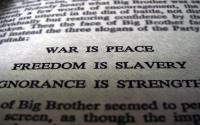31 July 2006
 Much of Britain's waste is stored at the Sellafield site |
The national scientific body made its call as the panel tasked with finding a long-term solution to the waste problem prepared to issue its final report.
The Committee on Radioactive Waste Management has already said that deep geological disposal is the best option.
Current scientific knowledge supported this view, said the Royal Society.
"It is important that we act with urgency because identifying appropriate sites and then consulting on and building these deep storage facilities will take decades," commented Sir David Wallace, the society's vice president.
The Committee on Radioactive Waste Management (CoRWM) will issue its final report on Monday.
UK NUCLEAR WASTE - VOLUMES AS PACKAGED FOR DISPOSAL  High-level waste - 2,000 cubic metres Intermediate-level waste - 350,000 cubic metres Low-level waste - 30,000 cubic metres Spent fuel - 10,000 cubic metres Plutonium - 4,300 cubic metres Uranium - 75,000 cubic metres |
It was specifically not asked to identify locations in the UK where this storage and disposal should take place.
CoRWM released an interim report in April; Monday's publication is not expected to differ on the main details.
A final disposal facility, or facilities, would be located several hundred metres underground. The waste would be encased in tough materials and would use the surrounding rock as a barrier to prevent radioactive leakage into the environment.
Around one-third of the land in the UK is thought to be geologically suitable for this purpose.
The committee said in April such stores could take several decades to develop and robust interim measures were therefore essential.
The Royal Society said it supported CoRWM's view that an independent body be set up to oversee the staged decision-making process into site selection and beyond.
"Such a body should have a much stronger science and engineering capacity than CoRWM and also have public engagement and education capability," the academy added.
 |
The UK's radioactive inventory from its current nuclear programme is expected to include 470,000 cubic metres of materials.
This includes the highly active waste from fuel re-processing and the irradiated remains of decommissioned reactors (it also includes the uranium and plutonium in spent fuel rods, although these are not technically classed as waste at the moment because the materials could be re-cycled into more nuclear fuel).
CoRWM's extensive three-year investigation of the issues has dismissed other disposal options, such as putting the waste on the ocean floor or flying it into the Sun.
The UK government indicated in its recent energy review that it was open to the idea of industry bringing forward proposals for a new generation of nuclear power stations.







